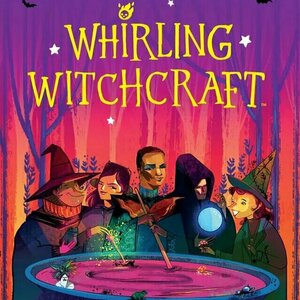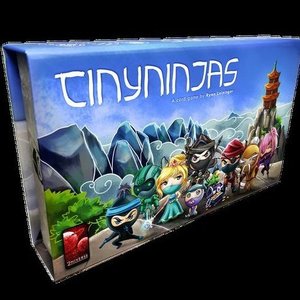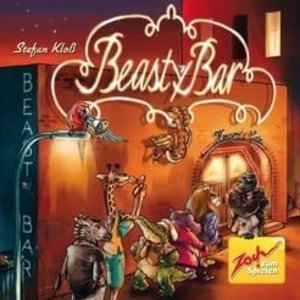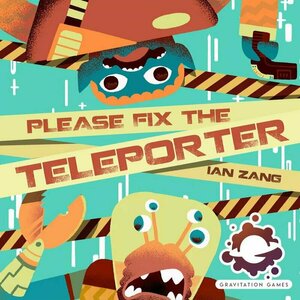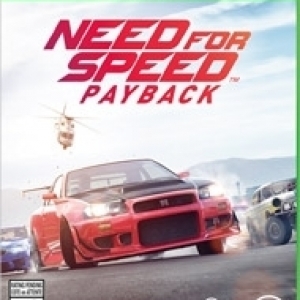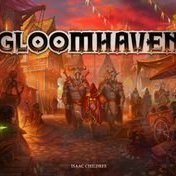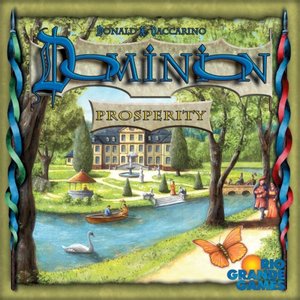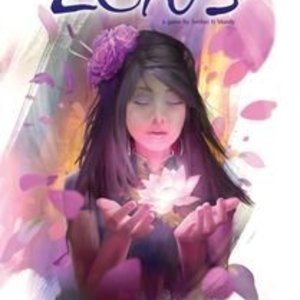Search
Search results
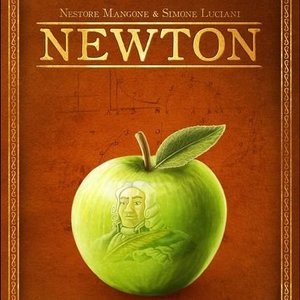
Newton
Tabletop Game
Around the middle of the 17th century with the advent of the scientific method, a period of great...
Boardgames 2018Games ScienceGames BrainGames ComplexGames
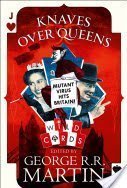
Knaves Over Queens
George R.R. Martin, Emma Newman, Paul Cornell, Charles Stross, Marko Kloos, Mark Lawrence, Peter Newman, Melinda M. Snodgrass, Peadar Ó Guilín, Kevin Andrew Murphy and Caroline Spector
Book
The return of the famous shared-world superhero books created and edited by George R. R. Martin,...
Purple Phoenix Games (2266 KP) rated Whirling Witchcraft in Tabletop Games
Nov 9, 2021
What is the thing that first draws you into a game? Is it talk of the gameplay and mechanics? Maybe you’ve had a good experience with the designer? Or perhaps the artwork is what catches your eye? For me, I’ve gotta say it’s not only the artwork, but the components as well. Obviously, we’re no strangers to board games, so scrolling through our feeds we see countless pictures of cards, boards, meeples, etc. It’s when a game has an interesting new component that it really pops out to me. Enter Whirling Witchcraft and its 3D cardboard cauldrons! It certainly got my attention, but does the game itself deserve a place on my shelves? Spoiler – it does, but keep reading to find out why!
Whirling Witchcraft is a game of simultaneous action selection and variable powers in which players take on the roles of witches creating various ingredients to be used in future potions. The neighboring witches are always on the lookout for new recipes, so of course you’ll share those secrets and even some ingredients with them!…….BUT these ingredients can be volatile, and having too many on your workbench could cause an explosion! Which witch is sly enough to not only manage their ingredients wisely, but also overflow opponents with extra ingredients?
Disclaimer: We were provided with a copy of this game for the purposes of this review. This is a finalized retail copy of the game, and what is described and pictured below is what you will get when you purchase this game. -L
To setup for a game, each player receives a player board, cauldron, and Arcana tracker with corresponding tokens. Players are randomly dealt 2 Personality Cards, and choose one to use for the game. Personality Cards offer unique powers or recipes for use during the game. All recipe cards are shuffled, and 4 cards are dealt to each player. Players receive a number of starting ingredients (cubes) to their workbench (player board), as stated on their Personality card, and the remaining ingredients go into a general supply. Choose a starting player and the game is ready to begin! Pictured below is the setup for a 3-player game.
This game is played over a series of rounds, and the turns in each round are performed simultaneously. Each round is broken down into two phases: the Study Phase and the Brewing Phase. The first step of the Study Phase is to Play recipes. Players look at the 4 recipe cards in hand and select one to play this round. Cards are placed face-down below the player boards. The next step, Reveal recipes, is pretty straightforward – all players reveal their chosen recipe and add it to their other recipes already in play. The final step of this phase is to resolve Arcana. Certain recipe cards have Arcana icons on the top that are collected when the recipe is played. Arcana comes in three different types (Book, Potion, and Raven), and is tracked on your Arcana tracker. When you have reached a certain amount of Arcana, you have the opportunity to trigger a special effect for the current round. For example, triggering the Raven Arcana allows you to immediately remove up to 2 ingredients from your workbench. Arcana can play into your strategy, so keep an eye on which recipes offer certain types of Arcana! Players check to see if any Arcana has been triggered, and perform the effects if they so choose, and the round then continues to the next phase.
The second phase of the round, the Brewing Phase, is broken down into 4 steps: Produce ingredients, Pass cauldrons, Check for winners, and Pass recipe cards. The Produce ingredients step is performed by all players simultaneously. Players will choose which recipe cards they have in play to be used this round. To use a recipe, you place ingredients (cubes) from your workbench on the ‘input’ spaces of the recipe card – all input spaces on a recipe card must be filled for the recipe to be completed. When you complete a recipe, take the corresponding ingredients shown on the ‘output’ spaces of that recipe card from the general supply. Players can decide how many/few of their recipe cards to be used each round (one, a few, or all of them), and each recipe card can only be used once per round. When all players are finished using their recipe cards, the ingredients are distributed. Ingredients from the ‘input’ spaces of a recipe go back to the general supply, and ingredients left on the ‘output’ spaces go into your cauldron.
This leads us to the next step – Pass cauldrons. All players will pass their cauldron (and the ingredients on it) to the player on their right. The ingredients from your new cauldron are now added to your workbench. Each type of ingredient has a finite number of spaces on your workbench, though. If these new ingredients cause you to completely fill up a row, any excess ingredients of that type are given back to the player who passed you the cauldron. Any ingredients you get back from an opponent go at the top of your player board, into your Witch’s Circle. When all players have resolved their new ingredients, the next step is to check for winners. If any player has 5 or more ingredients in their Witch’s Circle, they are declared the winner and the game ends! If nobody has at least 5 ingredients in their Witch’s Circle, players will pass their hand of remaining recipe cards to the player on their left, draw back up to 4 cards, and a new round begins. The game continues in this fashion until a player has at least 5 ingredients in their Witch’s Circle by the end of the round.
As you can tell from my intro, as well as the rating graphic, I really love this game. I came into it expecting something light, cutesy, and fun, and what I got was so much more than that. Yes, the components (more on that later) and artwork are colorful and eye-catching, but the gameplay is what really surprised me. For a game that literally only has 2 mechanics listed on BGG (simultaneous action selection and variable player powers), the amount of strategy in this game blew me away. Is it the most strategic game I’ve ever played? No. But it was one that kept me engaged and thinking the whole time. There are 3 major elements that you have to consider: recipes, ingredients, and your opponents. For recipe cards, you have to strategize which recipe to add to your tableau, as well as which recipes to use each round. You are allowed to use as many recipes in a round as you wish, so which ones are the best use of your resources? The next element: ingredients. Aside from strategizing about your recipe cards, you have to figure out how to best manage your ingredients. Which recipes offer the output you want? Which ones eat up large numbers of ingredients? These are all things you have to be considering during the Brewing Phase. And finally, you have to keep an eye on your opponents. You ultimately win by causing your neighbor to have an ‘overflow’ of ingredients – so which recipes can produce ingredients that they don’t need more of? Everyone can see each others’ player boards, which gives you a little insight into perhaps which recipe cards you want to activate this round. Add the fact that pretty much all of this is happening simultaneously?! That just is another layer to the strategy you need for this game! Even just describing this gameplay and strategic implications has me psyched to play again! There is much more to Whirling Witchcraft than meets the eye, and that makes it an awesome game to me.
Ok, so the part we’ve all be waiting for – components! The player boards, cards, and Arcana tokens are all great quality, and vibrant in color. The artwork itself is a unique style that really catches the eye and fits the theme extremely well. The iconography/color-coded ingredients are clear to differentiate, and help streamline the gameplay. The ingredient cubes are your standard wooden cubes, and they are nice and sturdy for their small size. The 3D cauldrons are sooooo cool! Are they necessary to the gameplay? Wellllll not entirely – you could easily just use a simple cardboard circle on which to place ingredients. BUT they make the game feel more immersive, exciting, and fun to play! AEG could have as easily not gone with the 3D idea, but the inclusion of this unique component helps elevate the engagement and gameplay to me. Having physical 3D cauldrons adds so much to the overall table presence of this game, and it makes it feel like you’re playing a deluxe/upgraded game. Add in the fact that the box is made to house the assembled cauldrons, so you don’t have to be continually assembling/disassembling them every time you play. Great forethought and execution! So all in all, excellent production quality overall!
If you’re in the market for a game with ‘simple’ mechanics but elevated strategy, I highly recommend Whirling Witchcraft. This game truly is a gem, and it plays relatively quickly for a ‘heavier’ game. I’ll be the first to admit that I was drawn to this game by the components, but the stellar gameplay is what makes me keep playing it. Purple Phoenix Games gives this one a whirling 5 / 6. Check it out, you won’t be disappointed!
Whirling Witchcraft is a game of simultaneous action selection and variable powers in which players take on the roles of witches creating various ingredients to be used in future potions. The neighboring witches are always on the lookout for new recipes, so of course you’ll share those secrets and even some ingredients with them!…….BUT these ingredients can be volatile, and having too many on your workbench could cause an explosion! Which witch is sly enough to not only manage their ingredients wisely, but also overflow opponents with extra ingredients?
Disclaimer: We were provided with a copy of this game for the purposes of this review. This is a finalized retail copy of the game, and what is described and pictured below is what you will get when you purchase this game. -L
To setup for a game, each player receives a player board, cauldron, and Arcana tracker with corresponding tokens. Players are randomly dealt 2 Personality Cards, and choose one to use for the game. Personality Cards offer unique powers or recipes for use during the game. All recipe cards are shuffled, and 4 cards are dealt to each player. Players receive a number of starting ingredients (cubes) to their workbench (player board), as stated on their Personality card, and the remaining ingredients go into a general supply. Choose a starting player and the game is ready to begin! Pictured below is the setup for a 3-player game.
This game is played over a series of rounds, and the turns in each round are performed simultaneously. Each round is broken down into two phases: the Study Phase and the Brewing Phase. The first step of the Study Phase is to Play recipes. Players look at the 4 recipe cards in hand and select one to play this round. Cards are placed face-down below the player boards. The next step, Reveal recipes, is pretty straightforward – all players reveal their chosen recipe and add it to their other recipes already in play. The final step of this phase is to resolve Arcana. Certain recipe cards have Arcana icons on the top that are collected when the recipe is played. Arcana comes in three different types (Book, Potion, and Raven), and is tracked on your Arcana tracker. When you have reached a certain amount of Arcana, you have the opportunity to trigger a special effect for the current round. For example, triggering the Raven Arcana allows you to immediately remove up to 2 ingredients from your workbench. Arcana can play into your strategy, so keep an eye on which recipes offer certain types of Arcana! Players check to see if any Arcana has been triggered, and perform the effects if they so choose, and the round then continues to the next phase.
The second phase of the round, the Brewing Phase, is broken down into 4 steps: Produce ingredients, Pass cauldrons, Check for winners, and Pass recipe cards. The Produce ingredients step is performed by all players simultaneously. Players will choose which recipe cards they have in play to be used this round. To use a recipe, you place ingredients (cubes) from your workbench on the ‘input’ spaces of the recipe card – all input spaces on a recipe card must be filled for the recipe to be completed. When you complete a recipe, take the corresponding ingredients shown on the ‘output’ spaces of that recipe card from the general supply. Players can decide how many/few of their recipe cards to be used each round (one, a few, or all of them), and each recipe card can only be used once per round. When all players are finished using their recipe cards, the ingredients are distributed. Ingredients from the ‘input’ spaces of a recipe go back to the general supply, and ingredients left on the ‘output’ spaces go into your cauldron.
This leads us to the next step – Pass cauldrons. All players will pass their cauldron (and the ingredients on it) to the player on their right. The ingredients from your new cauldron are now added to your workbench. Each type of ingredient has a finite number of spaces on your workbench, though. If these new ingredients cause you to completely fill up a row, any excess ingredients of that type are given back to the player who passed you the cauldron. Any ingredients you get back from an opponent go at the top of your player board, into your Witch’s Circle. When all players have resolved their new ingredients, the next step is to check for winners. If any player has 5 or more ingredients in their Witch’s Circle, they are declared the winner and the game ends! If nobody has at least 5 ingredients in their Witch’s Circle, players will pass their hand of remaining recipe cards to the player on their left, draw back up to 4 cards, and a new round begins. The game continues in this fashion until a player has at least 5 ingredients in their Witch’s Circle by the end of the round.
As you can tell from my intro, as well as the rating graphic, I really love this game. I came into it expecting something light, cutesy, and fun, and what I got was so much more than that. Yes, the components (more on that later) and artwork are colorful and eye-catching, but the gameplay is what really surprised me. For a game that literally only has 2 mechanics listed on BGG (simultaneous action selection and variable player powers), the amount of strategy in this game blew me away. Is it the most strategic game I’ve ever played? No. But it was one that kept me engaged and thinking the whole time. There are 3 major elements that you have to consider: recipes, ingredients, and your opponents. For recipe cards, you have to strategize which recipe to add to your tableau, as well as which recipes to use each round. You are allowed to use as many recipes in a round as you wish, so which ones are the best use of your resources? The next element: ingredients. Aside from strategizing about your recipe cards, you have to figure out how to best manage your ingredients. Which recipes offer the output you want? Which ones eat up large numbers of ingredients? These are all things you have to be considering during the Brewing Phase. And finally, you have to keep an eye on your opponents. You ultimately win by causing your neighbor to have an ‘overflow’ of ingredients – so which recipes can produce ingredients that they don’t need more of? Everyone can see each others’ player boards, which gives you a little insight into perhaps which recipe cards you want to activate this round. Add the fact that pretty much all of this is happening simultaneously?! That just is another layer to the strategy you need for this game! Even just describing this gameplay and strategic implications has me psyched to play again! There is much more to Whirling Witchcraft than meets the eye, and that makes it an awesome game to me.
Ok, so the part we’ve all be waiting for – components! The player boards, cards, and Arcana tokens are all great quality, and vibrant in color. The artwork itself is a unique style that really catches the eye and fits the theme extremely well. The iconography/color-coded ingredients are clear to differentiate, and help streamline the gameplay. The ingredient cubes are your standard wooden cubes, and they are nice and sturdy for their small size. The 3D cauldrons are sooooo cool! Are they necessary to the gameplay? Wellllll not entirely – you could easily just use a simple cardboard circle on which to place ingredients. BUT they make the game feel more immersive, exciting, and fun to play! AEG could have as easily not gone with the 3D idea, but the inclusion of this unique component helps elevate the engagement and gameplay to me. Having physical 3D cauldrons adds so much to the overall table presence of this game, and it makes it feel like you’re playing a deluxe/upgraded game. Add in the fact that the box is made to house the assembled cauldrons, so you don’t have to be continually assembling/disassembling them every time you play. Great forethought and execution! So all in all, excellent production quality overall!
If you’re in the market for a game with ‘simple’ mechanics but elevated strategy, I highly recommend Whirling Witchcraft. This game truly is a gem, and it plays relatively quickly for a ‘heavier’ game. I’ll be the first to admit that I was drawn to this game by the components, but the stellar gameplay is what makes me keep playing it. Purple Phoenix Games gives this one a whirling 5 / 6. Check it out, you won’t be disappointed!
Purple Phoenix Games (2266 KP) rated Tiny Ninjas in Tabletop Games
Jun 12, 2019
We at Purple Phoenix Games love Kickstarting games. We probably do it more than we should, but I am sure we are not alone in this. I, myself, have backed 59 games or game-related products to date (as of February 2019). Not all of them have been that good (I’m looking at you Shadow Days, IncrediBrawl, and A Duel Betwixt Us!), but some have been simply amazing. Where does this game about dueling ninjas rate? Pretty dang good.
So this one is a riff off the old regular deck of cards game “War.” In War you simply blindly compare cards from your personal deck and the highest number wins… essentially. In Tiny Ninjas, however, that concept has expanded this very familiar game and made it really sexy. Well, as sexy as you can make a game with chibi-esque ninja artwork.
There is still comparison of strength, but you take turns being the attacker and the defender. As the attacker, you decide how many of your hand of 5 cards you wish to play this round, resolve their effects, and then you become the defender. On defense, you are able to use only the cards you didn’t use as the attacker, whereas the attacker refills their hand back to the hand limit of 5 cards. Uh oh. Did I plan well enough to have plenty of defense, or will my hit points be depleted?? This is essentially the game’s skeleton.
Each card has a special attack or defense ability and sometimes it requires you to roll one of the two dice that comes with the game to determine strength or proc abilities. We all know that once dice are invited to the game a certain amount of luck is also introduced. That isn’t necessarily a bad thing here. I like a small amount of luck in my games. For me, it’s just another little wrinkle to be applied to my perfect strategy.
But let’s talk about those dice. The dice themselves are really great quality, and the stamping is great, and the icons on the dice are really really good. But I have problems with the card iconography that corresponds with the dice. On the cards, icons are printed in a variation of a circle. The circle looks a certain way if you are to use the white die. And then the circle looks differently to indicate usage of the red die. But then there are circles that correspond to the ink colors of the white and red dice that are also different but the same. That irks me just a bit because I think there could be other ways to do that. I found myself constantly looking at the reference card (which, THANK YOU SO MUCH FOR INCLUDING THIS) but maybe that’s just me and my preferences. After a while I caught on and it didn’t impede my enjoyment of the game any longer, but it was annoying at first.
I have not mentioned any of the other components because, frankly, they are really really great. The ingenious box-becomes-the-game-board idea is wonderful, the life trackers that hang out on the sides of the dice tray are great, the dojo sensei trackers, the cards and art on them are all top notch. For such an affordable package, you really do get quite a production.
I have no other qualms about the components, or the game play. It’s truly a fun experience. That said, Purple Phoenix Games gives Tiny Ninjas a stealthy 15 / 18. Don’t let this one sneak under your radar!
https://purplephoenixgames.wordpress.com/2019/02/22/tiny-ninjas-review/
So this one is a riff off the old regular deck of cards game “War.” In War you simply blindly compare cards from your personal deck and the highest number wins… essentially. In Tiny Ninjas, however, that concept has expanded this very familiar game and made it really sexy. Well, as sexy as you can make a game with chibi-esque ninja artwork.
There is still comparison of strength, but you take turns being the attacker and the defender. As the attacker, you decide how many of your hand of 5 cards you wish to play this round, resolve their effects, and then you become the defender. On defense, you are able to use only the cards you didn’t use as the attacker, whereas the attacker refills their hand back to the hand limit of 5 cards. Uh oh. Did I plan well enough to have plenty of defense, or will my hit points be depleted?? This is essentially the game’s skeleton.
Each card has a special attack or defense ability and sometimes it requires you to roll one of the two dice that comes with the game to determine strength or proc abilities. We all know that once dice are invited to the game a certain amount of luck is also introduced. That isn’t necessarily a bad thing here. I like a small amount of luck in my games. For me, it’s just another little wrinkle to be applied to my perfect strategy.
But let’s talk about those dice. The dice themselves are really great quality, and the stamping is great, and the icons on the dice are really really good. But I have problems with the card iconography that corresponds with the dice. On the cards, icons are printed in a variation of a circle. The circle looks a certain way if you are to use the white die. And then the circle looks differently to indicate usage of the red die. But then there are circles that correspond to the ink colors of the white and red dice that are also different but the same. That irks me just a bit because I think there could be other ways to do that. I found myself constantly looking at the reference card (which, THANK YOU SO MUCH FOR INCLUDING THIS) but maybe that’s just me and my preferences. After a while I caught on and it didn’t impede my enjoyment of the game any longer, but it was annoying at first.
I have not mentioned any of the other components because, frankly, they are really really great. The ingenious box-becomes-the-game-board idea is wonderful, the life trackers that hang out on the sides of the dice tray are great, the dojo sensei trackers, the cards and art on them are all top notch. For such an affordable package, you really do get quite a production.
I have no other qualms about the components, or the game play. It’s truly a fun experience. That said, Purple Phoenix Games gives Tiny Ninjas a stealthy 15 / 18. Don’t let this one sneak under your radar!
https://purplephoenixgames.wordpress.com/2019/02/22/tiny-ninjas-review/
Purple Phoenix Games (2266 KP) rated Beasty Bar in Tabletop Games
Jun 12, 2019
When I say ‘nightclub,’ I know what you’re thinking – strobe lights, loud music, and dancing. What you DON’T think of is the fact that getting into the club in the first place probably means you had to wait in line outside. Some people take their clubbing very seriously, and the entrance line can become a cut-throat battlefield of subtle tricks or blatant line-jumping to get you ahead (literally) of the other patrons!
Welcome to Beasty Bar – the hottest nightclub in the animal kingdom! The house is jumpin’ and the line is out the door! All of the animals are dressed to the nines and are vying for an opportunity to get into the club. But unfortunately, only a certain number of animals will be granted access. So, naturally, it’s time to get sly! Each animal has a different tactic, but if they’re not careful, they could get booted out of the line completely!
In Beasty Bar, a game of hand management with a sprinkle of ‘take that,’ players are trying to get the most animals from their hand into the club. All players receive an identical deck of cards, which are then shuffled, and draw 4 cards into their hand. On their turn, players will play one card from their hand into the line, perform the corresponding action, address any on-going abilities, and draw another card from their deck. Each animal card has a special ability, either immediate or on-going, that can be used to alter its place in the line. Choose your cards wisely – all players have the same pool of cards, and a power you used to your benefit could later be used against you! Once all cards have been played, the game ends – the player with the most animals in the club is the winner!
I generally do not like ‘Take That’ games – I can be pretty competitive and this mechanic can sometimes turn confrontational for me. That being said, I actually like Beasty Bar. Since it has such a small play area (only 5 cards at a time), the line-up is always changing. And that requires some fast and strategic thinking that negates the ‘Take That’ aspect for me – I am more focused on getting my animals ahead in line than I am in booting my opponents out of the way out of spite. You really have to think about what animal abilities you want to use and when, depending on the current line-up. Yes, cards will inevitably be kicked out of the line, but for me it doesn’t feel as vengeful in this game.
I really like that this game is easy to learn and fast to play. The concept and gameplay are simple enough, they only need to be explained once. And the game plays relatively quickly, so you can either play it multiple times in a row or use it as a filler between some heavier/longer games. All of the animal abilities are outlined in the rulebook, but if you’re ever unsure of an animal’s power, it is illustrated right at the bottom of the card for you! Gone are the days of referring back to the rulebook every turn to double-check, or having to reveal a card in your hand because you have to ask for clarification again.
Is Beasty Bar my favorite game? Absolutely not. But it’s one that I don’t mind playing when I am crunched for time or need to take a breather from a more complicated game. It’s made its way into my collection, and I think it’s going to stay. Purple Phoenix Games gives Beasty Bar a 7 / 12 (Bryan and Josh have not played it yet).
https://purplephoenixgames.wordpress.com/2019/01/18/beasty-bar-review/
Welcome to Beasty Bar – the hottest nightclub in the animal kingdom! The house is jumpin’ and the line is out the door! All of the animals are dressed to the nines and are vying for an opportunity to get into the club. But unfortunately, only a certain number of animals will be granted access. So, naturally, it’s time to get sly! Each animal has a different tactic, but if they’re not careful, they could get booted out of the line completely!
In Beasty Bar, a game of hand management with a sprinkle of ‘take that,’ players are trying to get the most animals from their hand into the club. All players receive an identical deck of cards, which are then shuffled, and draw 4 cards into their hand. On their turn, players will play one card from their hand into the line, perform the corresponding action, address any on-going abilities, and draw another card from their deck. Each animal card has a special ability, either immediate or on-going, that can be used to alter its place in the line. Choose your cards wisely – all players have the same pool of cards, and a power you used to your benefit could later be used against you! Once all cards have been played, the game ends – the player with the most animals in the club is the winner!
I generally do not like ‘Take That’ games – I can be pretty competitive and this mechanic can sometimes turn confrontational for me. That being said, I actually like Beasty Bar. Since it has such a small play area (only 5 cards at a time), the line-up is always changing. And that requires some fast and strategic thinking that negates the ‘Take That’ aspect for me – I am more focused on getting my animals ahead in line than I am in booting my opponents out of the way out of spite. You really have to think about what animal abilities you want to use and when, depending on the current line-up. Yes, cards will inevitably be kicked out of the line, but for me it doesn’t feel as vengeful in this game.
I really like that this game is easy to learn and fast to play. The concept and gameplay are simple enough, they only need to be explained once. And the game plays relatively quickly, so you can either play it multiple times in a row or use it as a filler between some heavier/longer games. All of the animal abilities are outlined in the rulebook, but if you’re ever unsure of an animal’s power, it is illustrated right at the bottom of the card for you! Gone are the days of referring back to the rulebook every turn to double-check, or having to reveal a card in your hand because you have to ask for clarification again.
Is Beasty Bar my favorite game? Absolutely not. But it’s one that I don’t mind playing when I am crunched for time or need to take a breather from a more complicated game. It’s made its way into my collection, and I think it’s going to stay. Purple Phoenix Games gives Beasty Bar a 7 / 12 (Bryan and Josh have not played it yet).
https://purplephoenixgames.wordpress.com/2019/01/18/beasty-bar-review/
Purple Phoenix Games (2266 KP) rated Please Fix the Teleporter in Tabletop Games
Jan 25, 2021
Captain Gerf and Emperor Korlax are trapped inside the teleportation beam? Again? Who forgot to install the upgrade module? Uh oh, it was me… Well now I need to get to work fixing this infernal teleporter because my captain and his captured enemy keep coming aboard all different. They are all shouting at me, “PLEASE FIX THE TELEPORTER!”
Please Fix the Teleporter is a quick real-time action/dexterity card game for 1-4 players, but in this preview I will be tackling it as a solo experience. In it players are teleportation specialists charged with repairing a malfunctioning teleportation beam that is displaying strange mix-and-match features of the two persons attempting to board the craft. By matching the images on the display six times the Captain and his quarry can board safely and in one piece.
DISCLAIMER: We were provided a prototype copy of this game for the purposes of this review. These are preview copy components, and I do not know for sure if the final components will be any different from these shown. You are invited to back the game through the Kickstarter campaign,or through any retailers stocking it after fulfillment. -T
To setup for a solo game choose one color of body part tiles and place them in front of the player. Shuffle the deck of scrambled cards and deal six face-down. Have a timer handy (Alexa, Siri, or Google also work well) and the game may begin!
Gameplay is simple: flip over one card, match the card with the body tiles to recreate the image and then flip over the next card. Repeat these steps until all six cards have been matched and then stop the timer. Based on the table on the back of the rulesheet the player may determine how well they fared. For example, the highest score that may be achieved is five stars, which is earned by completing the game in under 30 seconds.
Once the game is over, the player will most certainly wish to play again, so multiple games may be played in order to earn that glorious five star rating.
Multiplayer rules are almost exactly the same except instead of dealing six cards at the beginning, the first player to match and claim five cards will be the winner.
Components. This game is a bunch of cards and four tiles per player. The cards are nice squares and the tiles are chunky cardboard. What sets this game apart for me is the art style. The art here, as you have seen, is so crazy and wonky and I just love it! The colors used are some of my favorites and it just looks amazing on the table. I have zero complaints for components and art.
Gameplay is similarly loved. This one is so quick and easy that anyone can play and be great at it. It takes mere seconds to teach and each player will want to play more and more, even the solo player. I cannot really comment on strategy, as this game really doesn’t lend itself to any sort of strategic play. It is a free-for-all to match the cards and move on to the next. I like being frantic.
So if you are at all like me and love these little “refreshers,” as I like to call them, check this one out. It will fit perfectly between two heavy hitters to refresh the players for the next game. Or will perfectly balance your night of solo play. Are you into theme nights? I am. What a great addition to an outer space themed game night! Quick and easy with excellent art. This one is a winner, even if I never manage to actually fix the dang teleporter.
Please Fix the Teleporter is a quick real-time action/dexterity card game for 1-4 players, but in this preview I will be tackling it as a solo experience. In it players are teleportation specialists charged with repairing a malfunctioning teleportation beam that is displaying strange mix-and-match features of the two persons attempting to board the craft. By matching the images on the display six times the Captain and his quarry can board safely and in one piece.
DISCLAIMER: We were provided a prototype copy of this game for the purposes of this review. These are preview copy components, and I do not know for sure if the final components will be any different from these shown. You are invited to back the game through the Kickstarter campaign,or through any retailers stocking it after fulfillment. -T
To setup for a solo game choose one color of body part tiles and place them in front of the player. Shuffle the deck of scrambled cards and deal six face-down. Have a timer handy (Alexa, Siri, or Google also work well) and the game may begin!
Gameplay is simple: flip over one card, match the card with the body tiles to recreate the image and then flip over the next card. Repeat these steps until all six cards have been matched and then stop the timer. Based on the table on the back of the rulesheet the player may determine how well they fared. For example, the highest score that may be achieved is five stars, which is earned by completing the game in under 30 seconds.
Once the game is over, the player will most certainly wish to play again, so multiple games may be played in order to earn that glorious five star rating.
Multiplayer rules are almost exactly the same except instead of dealing six cards at the beginning, the first player to match and claim five cards will be the winner.
Components. This game is a bunch of cards and four tiles per player. The cards are nice squares and the tiles are chunky cardboard. What sets this game apart for me is the art style. The art here, as you have seen, is so crazy and wonky and I just love it! The colors used are some of my favorites and it just looks amazing on the table. I have zero complaints for components and art.
Gameplay is similarly loved. This one is so quick and easy that anyone can play and be great at it. It takes mere seconds to teach and each player will want to play more and more, even the solo player. I cannot really comment on strategy, as this game really doesn’t lend itself to any sort of strategic play. It is a free-for-all to match the cards and move on to the next. I like being frantic.
So if you are at all like me and love these little “refreshers,” as I like to call them, check this one out. It will fit perfectly between two heavy hitters to refresh the players for the next game. Or will perfectly balance your night of solo play. Are you into theme nights? I am. What a great addition to an outer space themed game night! Quick and easy with excellent art. This one is a winner, even if I never manage to actually fix the dang teleporter.
GameCritics (290 KP) rated Need for Speed Payback in Video Games
Nov 9, 2017
Simple, fun handling (2 more)
Burnout-style takedowns
Tonnes of race styles
Speed Cards feel unnecessary (1 more)
Rubberband AI
Need For Speed Payback doesn’t really set the genre alight, but it’s the closest we’re likely to get to a new Burnout game. It’s fun to play; mixing various racing events with the explosive set pieces of its proper story missions
Critic- Gary Bailey
Original Score: 8 out of 10
Read Review: http://www.godisageek.com/reviews/need-for-speed-payback-review/
Original Score: 8 out of 10
Read Review: http://www.godisageek.com/reviews/need-for-speed-payback-review/
Gagnrath (14 KP) rated Gloomhaven in Tabletop Games
Mar 10, 2019
Great Campaign Game
The box is big, but the game is bigger. I have been playing this with a group and it is definitely an epic game. It is worth playing if you have a group, but one thing that puts a hollow spot in my soul...it plays like a legacy game, prompting you to destroy cards as you go and Mark your map.
Akward (448 KP) rated Dominion: Prosperity in Tabletop Games
May 27, 2018
Platinum and Plantations are excellent additions (2 more)
Action cards are simple
Slightly extends the length of the game.
The Best Dominion Expansion
Prosperity is by far the best of the Dominion expansions, and once you have it, you will not play without it again. The addition of platinum and plantations extends the game just enough to make investing in actions worth it.
A lot of the new expansions focus on adding too much complexity. Prosperity keeps things simple.
A lot of the new expansions focus on adding too much complexity. Prosperity keeps things simple.
Renata Adam (34 KP) rated Lotus in Tabletop Games
Nov 22, 2018
Oh so beautiful
This is fairly simple game with straight forward strategy that has few variations. It helps if your opponent is as skilled as you as that makes it more challenging. Said that, I am very happy to return to this game when I have bit of time as the cards are beautiful and it is definitely one of those 'feel good' games, no matter whether you win or not. It is a good addition to my collection.
